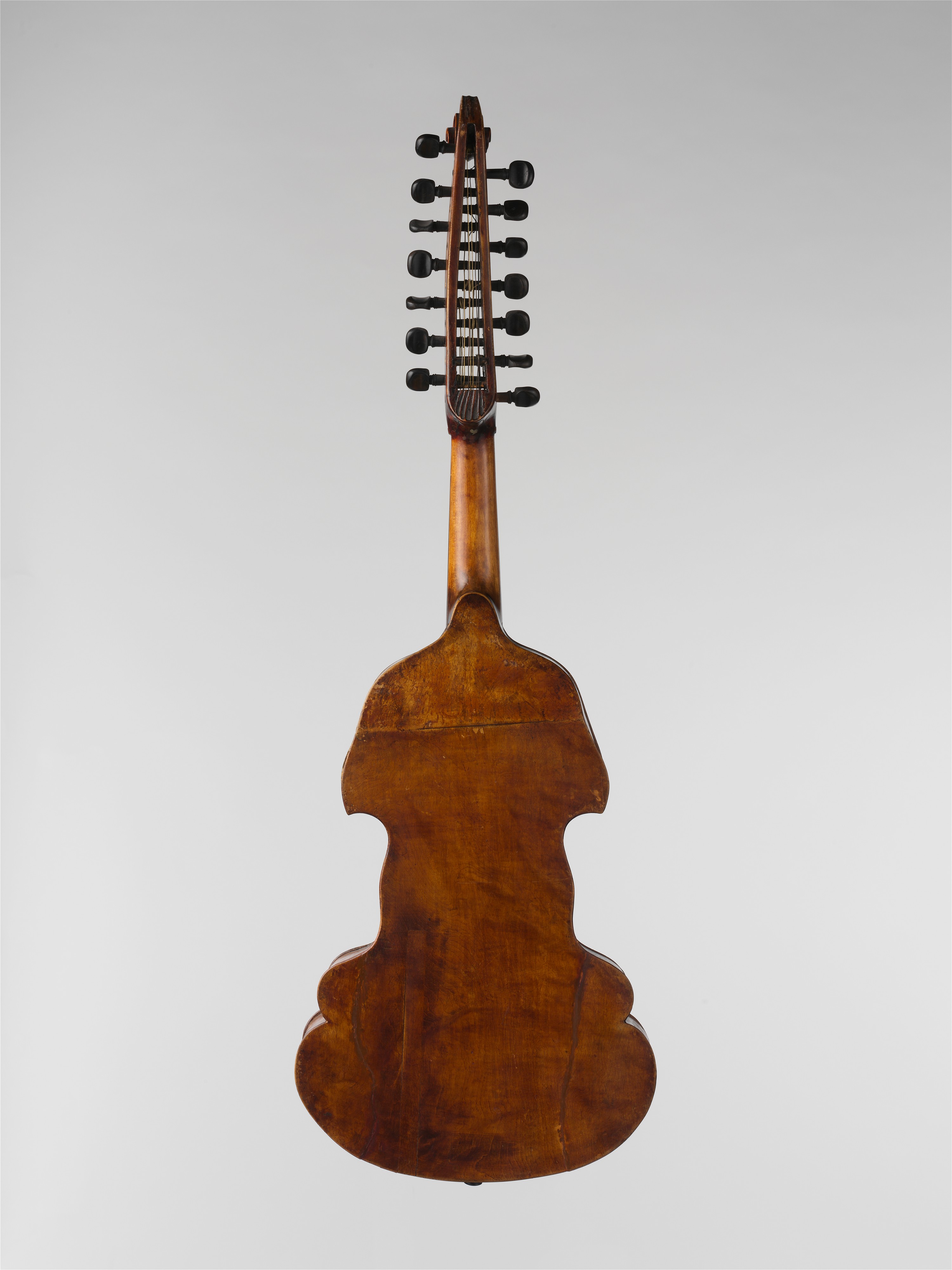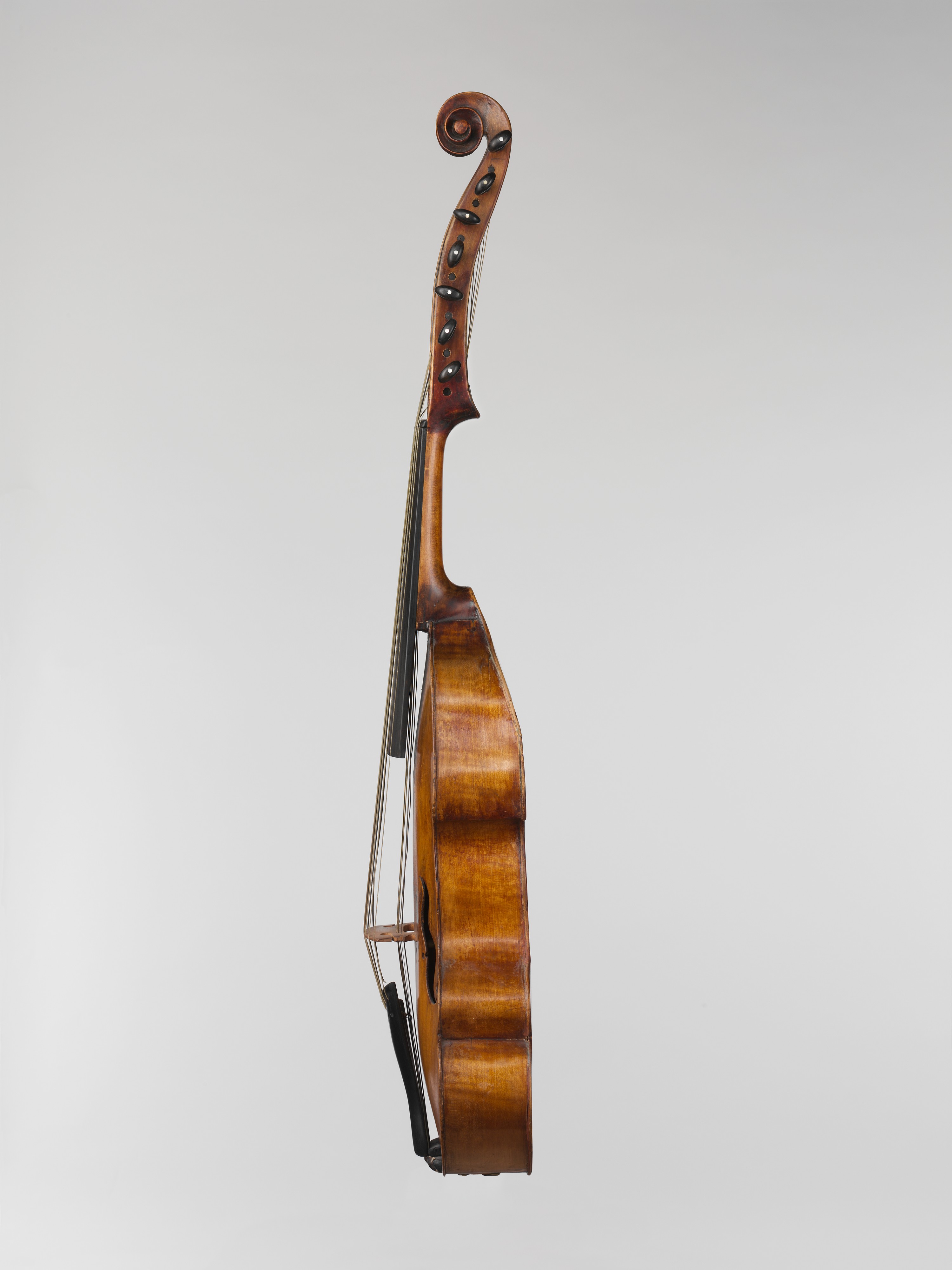Viola d'Amore
Not on view
The viola d'amore, or viola "of love," is a bowed stringed instrument which gained great popularity in the eighteenth century. Much of its history, including the derivation of its name, is unknown. It has many characteristics of the viol family such as a flat back, ribs that are flush with the top and back, and a rosette in addition to soundholes. Yet, like a violin, it is unfretted and held under the chin while played. Violas d'amore typically have seven playing strings, though instruments with other numbers of strings are not unusual. Perhaps the most distinguishable characteristic of the viola d'amore is the presence of sympathetic strings, which are not played but located behind the bowed strings and vibrate "in sympathy." The sympathetic strings contribute to produce a tone that is clear, and often described as "silvery." The sympathetic strings also contribute to creating a more resonant sound with a longer decay. Sympathetic strings are found on several European folk instruments, including the Swedish nyckelharpa and the Norwegian hardanger fiddle. They are prevalent on stringed instruments from India, most notably the sitar. The viola d'amore was popular with eighteenth-century composers and can be found in the works of J. S. Bach, Vivaldi, Telemann, Haydn, and Locatelli.
Description: Seven playing and seven sympathetic strings, wavy outline, spruce belly of very fine and even grain with high, full arching, flame soundholes, stained hardwood and maple purfling, and inserted oval rosette; overhanging edges; thin, flat, one-piece, plain maple back cut on slab, sloping to top; no purfling; plain maple ribs; maple neck, grafted pegbox and scroll; replacement ebony fingerboard and tailpiece, fingerboard, raised and widened by wedges; replacement ebonized fruitwood pegs with mother-of-pearl eyes; spruce soundpost board; traces of thick brown varnish mostly washed off and replaced with thin, light brown varnish, retouched in various places; two dowels in ribs and upper block; pegbox open both sides; sympathetic strings attached to small pins in lower rib; lower nut extremely high and probably not original; crude replacement bridge; probably originally six playing and six sympathetic strings as nut is too narrow for the current configuration. (R. Hopfner, 1997)
Due to rights restrictions, this image cannot be enlarged, viewed at full screen, or downloaded.
This artwork is meant to be viewed from right to left. Scroll left to view more.




